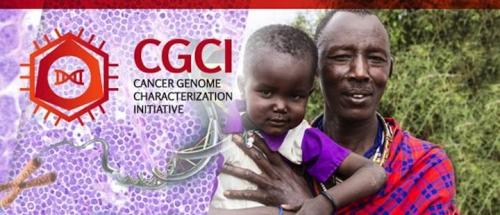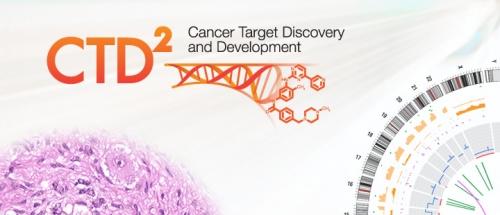2011: A Year of Progress and Change for the Office of Cancer Genomics
, by Shannon Behrman, JC Zenklusen, Robin Broughton, Jaime Auvil, and Daniela Gerhard
As we close the curtain on 2011, the Office of Cancer Genomics (OCG) is inspired to reflect on the year's milestones. 2011 was a year of great progress and change for OCG. The three OCG initiatives, Cancer Genome Characterization Initiative (CGCI), Therapeutically Applicable Research to Generate Effective Treatments (TARGET), and Cancer Target Discovery and Development (CTD²), nurtured a variety of cancer genomics-related projects that will continue into 2012. Although each project is in a different phase in its lifecycle, they all have made several noteworthy accomplishments. In this article, we review the year's happenings for OCG and its projects. We also project our aspirations for the new year.
In January, Dr. Harold Varmus, NCI director, underscored his commitment to cancer genomics research by announcing the formation of the Center for Cancer Genomics. This new center integrates much of the cancer genomics efforts at NCI, including the Office of Cancer Genomics (OCG) and The Cancer Genome Atlas (TCGA). Almost one year since the announcement, the Center for Cancer Genomics is in full operation with Dr. Barbara Wold at the helm as the Interim Director. OCG is looking forward to a new year of growth and opportunity under Dr. Wold's vision and direction.
Cancer Genome Characterization Initiative (CGCI)
Non-Hodgkin Lymphoma
Pushing the boundaries of advanced methodologies in cancer genomics research, the Cancer Genome Characterization Initiative (CGCI) initiated a project several years ago to resolve the genetic events driving the two most abundant forms of non-Hodgkin lymphoma (NHL), follicular lymphoma (FL), and diffuse large B-cell lymphoma (DLBCL). Despite progress from other research groups in unearthing genomic abnormalities of FL and DLBCL, the precise molecular mechanisms contributing to these two NHLs were largely unclear.
Last year, however, a group of CGCI investigators discovered a potential role for impaired histone modification in the development of NHL. Meddling with histone modification could lead to the deregulated expression of a large number of genes, including many genes previously implicated in cancer development. Curiously, they found recurrent mutations for one amino acid (Tyr641) in the histone modifying gene, EZH2, in a subset of NHL tumors. This single amino acid (Tyr641) mutation showed altered activity in in vitro assays.
A larger-scale sequencing effort published in 2011 confirmed the importance of histone modification in NHL pathogenesis. The CGCI investigators confirmed that two other histone modifying genes, MLL2 and MEF2B, are frequently mutated in NHL tumors. They also revealed a list of several genes not previously implicated in NHL tumor biology.
2012 will be a promising year for this project as investigators continue to perform pre-clinical functional studies in mice. They are testing the efficacy in targeting the histone modifying genes, predominately EZH2, as a new form of therapy for NHL patients. And, as Ryan Morin explained in the previous issue of the OCG e-Newsletter, "We have a much larger list of genes predicted to be under selection in NHL that we are currently following up on."
HIV+ Tumor Molecular Characterization Project (HTMCP)
To gain insight into the potentially unique molecular features of tumors in patients infected with human immunodeficiency virus (HIV), the NCI's Office of Cancer Genomics (OCG) and the Office of HIV and AIDS Malignancy (OHAM) jointly created the HIV+ tumor molecular characterization project (HTMCP). The HIV-infected population, despite the widespread use of life-sustaining antiretroviral drugs, has a higher risk of incurring some types of cancer as compared to the general population. The mechanisms underlying this disparity are largely unknown. HTMCP hopes to address this gap in understanding by utilizing state-of-the-art genomic technologies to pinpoint genetic changes and/or uncover hidden viral agents specific to these tumors. The tumor types included in this project are cervical cancer, diffuse large B-cell lymphoma (DLBCL), and lung cancer.
With assistance from the AIDS Malignancies Consortium and experts for each disease type, OCG developed detailed procedures for the acquisition, handling, shipping, and processing of samples this year. Using these refined procedures, HTMCP investigators are now collecting DLBCL and lung samples from North American institutions and have even started genomic and transcriptomic sequencing of 3 of the DLBCL cases. Next year, investigators will start collecting samples of all three tumor types from three African institutions.
As samples continue to accumulate from an increasing number of sources in 2012, the exciting phase of genomic sequencing and analysis will soon begin. HTMCP expects to have the majority of the projected 100 cases per tumor type in the analytical pipeline by the end of 2012.
Burkitt Lymphoma Genome Sequencing Project (BLGSP)
Launched by NCI in 2010, the Burkitt Lymphoma Genome Sequencing Project (BLGSP) is funded by the Foundation for Burkitt Lymphoma Research and coordinated by the Foundation for the National Institutes of Health. Burkitt Lymphoma (BL) is a cancer that commonly affects people of equatorial Africa and children. Current chemotherapy regimens are effective in approximately 40-90% of BL patients, depending on age, stage of the disease, treatment regimen, and site of the treatment facility. Hence, new treatments are needed to improve their efficacy as well as reduce their toxicity. The goal of BLGSP is to develop a genomic databank for BL to inform a deeper understanding of its molecular pathogenesis and facilitate improvements to its detection and treatment. Projected to take up to five years to complete, BLGSP will compile a list of genetic changes present in BL tumors in order to identify potential biological markers and/or drug targets. The study will include adult and pediatric patients with different types of BL: sporadic, endemic, and HIV-positive sporadic BL. BLGSP will also track clinical data on each BL tumor so associations between clinical parameters and genetic abnormalities can be discovered.
BLGSP is now set to begin accruing tissues in early 2012 and hopes to complete tissue accrual December 2013. By collaborating with a large-scale pediatric epidemiology study of BL in East Africa, BLGSP anticipates it will soon meet its tissue accrual goals for patients with the endemic form of the disease. Thus, efforts in the new year will focus on obtaining tissues from patients with sporadic and HIV-associated BL.
Although still in the early stages of tissue acquisition, BLGSP holds much promise as the gateway towards an improved molecular understanding of one disease disparately afflicting African populations and children.
Therapeutically Applicable Research to Generate Effective Treatments (TARGET)
Recognizing a plateau in the improvement of outcomes for children suffering from cancer, NCI launched a pilot in 2006 entitled Therapeutically Applicable Research to Generate Effective Treatments (TARGET). Six years later, TARGET is a large-scale NCI-supported program that uses cancer genomics methods to investigate five different pediatric cancers: acute lymphoblastic leukemia (ALL), acute myeloid leukemia (AML), neuroblastoma (NBL), osteosarcoma (OS), and Wilms tumor (WT). The goal of TARGET is to use advanced genomic technologies to inform the development of more effective, less toxic drugs for childhood cancers.
This year, all five TARGET disease teams have made significant progress in identifying and characterizing genetic changes in pediatric tumors. The TARGET acute lymphoblastic leukemia (ALL) team published the largest pediatric cancer genome sequencing effort reported to date, outlining 4 key cancer signaling pathways (including the Janus kinase signaling pathway) as potentially contributing to ALL pathogenesis. They also found that frequency of mutations within these four major pathways varies greatly across genetic subtypes, thereby revealing promising new therapeutic targets in certain subsets of childhood ALL. The other teams will soon complete their analyses with promising new discoveries about the other pediatric cancers in the coming year.
TARGET looks forward to an exciting new year of data generation, analysis, and collaboration that will ultimately lead to better outcomes for children with debilitating diseases. All sequencing and molecular characterization data from each TARGET project will be made available to the research community in a user-friendly format on the TARGET website. You can learn more about TARGET's latest research, how to access new data online and more at a special NCI-hosted two-hour session at the upcoming American Association for Cancer Research Annual Meeting, which takes place March 31 - April 4, 2012. Read the announcement in this issue of the newsletter for more details.
Cancer Target Discovery and Development (CTD²)
The Cancer Target Discovery and Development (CTD²) initiative takes a uniquely integrative and comprehensive approach to cancer genomics research. Wading through the flood of complex genomics data generated by the research community, the goal of CTD² is to identify key genetic features of tumors and experimentally validate them through biological, chemical, and computational methods. Unique genetic features of tumors may provide targets for more effective therapeutics or markers for a patient's outcome or the disease itself.
The five Centers comprising the CTD² pilot phase—also known as the 'CTD² network'—have achieved an impressive level of project integration and success, especially considering the short time frame the research has taken place. After having just completed its second and final year of operation, the current CTD² network has produced a number of exemplary publications. Adding to its list of accomplishments, the network's highly efficacious data sharing format has caught the attention of other NIH-sponsored projects (such as the Library of Integrated Network-based Cellular Signatures, LINCS), which are now considering its adoption.
Due to the success of the CTD² pilot phase, the NCI's Senior Program Leadership proposed the development of the pilot into a new NCI-supported program. The Board of Scientific Advisers approved this proposal less than one year ago, in the spring of 2011. Rapidly following this approval, NCI issued the request for applications for the new CTD² program. The applications have been reviewed by a special emphasis panel assembled by the NCI's Division of Extramural Affairs and will award new network Center grants in the spring of 2012.


